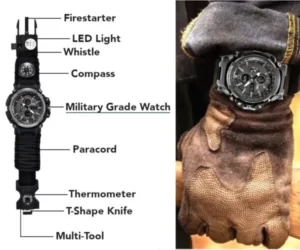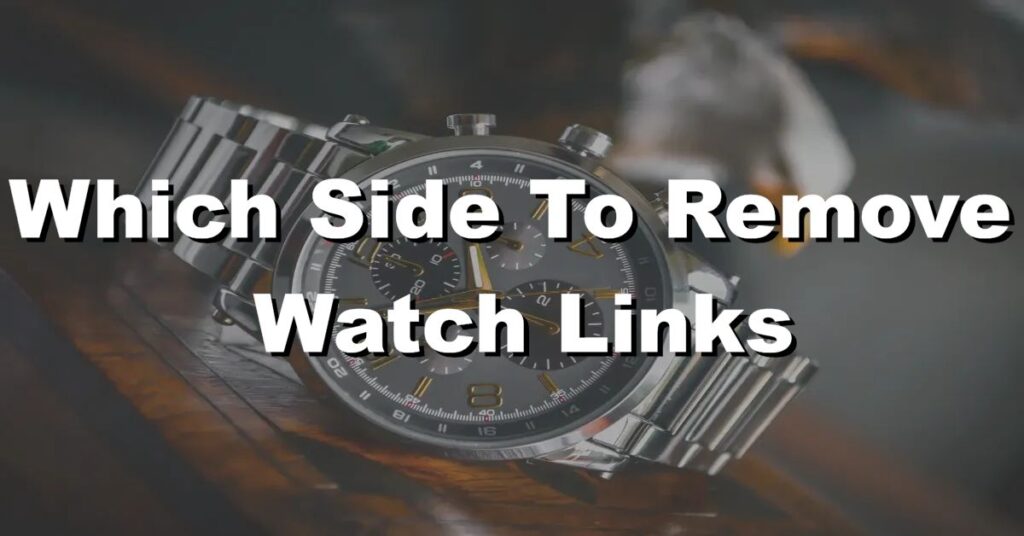Removing links from a watch band is a simple task, but it’s essential to know which side to remove the links from to avoid damaging the band or the watch. In this blog post, we will guide you on which side of the watch band to remove the links and the steps to follow for a safe and successful removal.

Understanding watch links and their directionality:
Watch links are the individual segments that make up a watch bracelet or strap. It’s important to understand that watch links often have directionality, meaning they have a specific orientation. The directionality is usually indicated by arrows or markings on the inner side of the links. This information guides you on how the links should be connected to maintain the bracelet’s proper alignment and aesthetics.
How to determine which side of the watch links to remove:
When adjusting a watch bracelet by removing links, it’s crucial to identify which side of the links should be detached. Look for indications, such as arrows or markings, on the inside of the links. These markings usually point in the direction that the pins or screws need to be removed to separate the links.
By following the correct direction, you can ensure that the bracelet remains properly aligned and functional.
Considering the watch’s symmetry and design when removing links:
When removing links from a watch bracelet, it’s important to consider the watch’s symmetry and design. Assess how many links need to be removed from each side of the bracelet to maintain the visual balance.
Be mindful of any decorative or functional elements, such as clasps or buckles, that may affect the overall aesthetics and functionality of the watch. Taking these factors into account ensures that the watch retains its intended design and wearing experience.
Best practices for storing and keeping track of removed links:
After removing links from a watch bracelet, it’s essential to store them safely and keep track of them. Place the removed links in a small container or a resealable bag to prevent loss or damage. Consider labeling the container or bag with the specific watch model or relevant information to avoid confusion.
It’s also helpful to keep the container in a secure location, such as a dedicated watch accessories box or drawer. By implementing these practices, you can ensure that the removed links are preserved and readily accessible if needed in the future.
Conclusion
By understanding watch links’ directionality, determining the correct side to remove links, considering symmetry and design, and adopting best practices for storage, you can confidently make adjustments to your watch bracelet. These practices help maintain the bracelet’s integrity, preserve the watch’s aesthetics, and ensure a comfortable and personalized fit.

